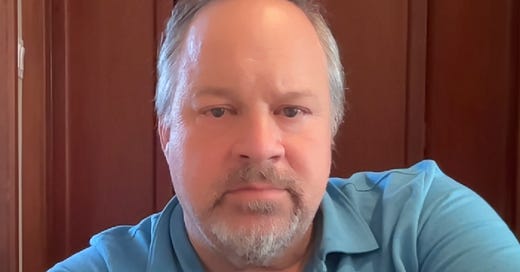MICROBLOGGING: QE in Retrospect
From þe Chat, & of þe Moment… Things worth noting, but much too short to be worth a full post...
Gillian Tett, Carmen Reinhart, Peter Schiff, & Brad DeLong on IAI.TV Talking About: QE in Retrospect
The danger with going third of three discussants is that the smartest things will already have been said. So I need to think of the third smartest thing that might be said to lead with…
My view is that John Stuart Mill got it right back in 1829. Walras's Law. Money is the key commodity for the economy. An excess demand for money is excess supply of currently produced goods and services, is unemployment, and is fire sales of non-money assets. To avoid deep and long depression, you need to print money to satisfy that excess demand.
What exactly "money" is in this framework, however, it's a subtle and changing thing:
sometimes the money that matters is liquidity and the economy is monetarist;
sometimes the money that matters is savings vehicles and the economy is Keynesian;
sometimes the money that matters is safety, and the economy is Minskyite.
And as for QE...
It is a Friedmanite answer to what I think was a Minskyite question. It was mammoth provision of liquidity when it was, rather, safety that was in short supply. Thus I could not quite wrap my head around QE back when it was proposed, and I never could quite figure it out...
Guess that the true term premium is 10 basis points per year of duration...
Then $1.4 trillion of quantitative easing in assets, averaging seven years of duration, would take risk bearing capacity that is paid $10 billion a year and free it up for deployment in things other than the treasury market. That is $10 billion a year of a valuable, productive resource that can then be devoted to putting people to work and hence hastening recovery and growth. But in a $70 trillion a year world economy, things would have to be very strange indeed, and there would have to be very precise bottlenecks, multipliers, and accelerators to expect such an 0.015% augmentation of private sector productive resources to do much.
It seemed to me beforehand that quantitive easing would have big effects only if it worked not through portfolio balance and resource augmentation channels, but rather, through confidence-building and signaling.
But I did not really understand how doing something new and surprising of extraordinary headline-number magnitude, but with little effect on real resource flows, was thought likely to accomplish much...
<https://open.substack.com/chat/posts/0cf9bad3-2432-444b-a54f-cbfd619a9bcc?utm_source=share>




